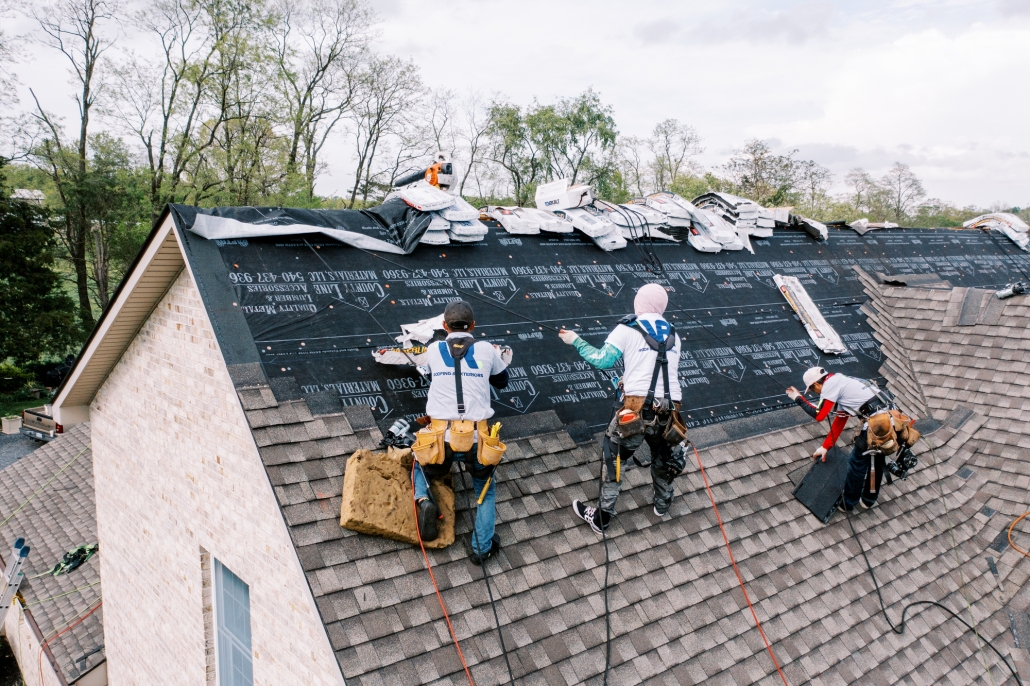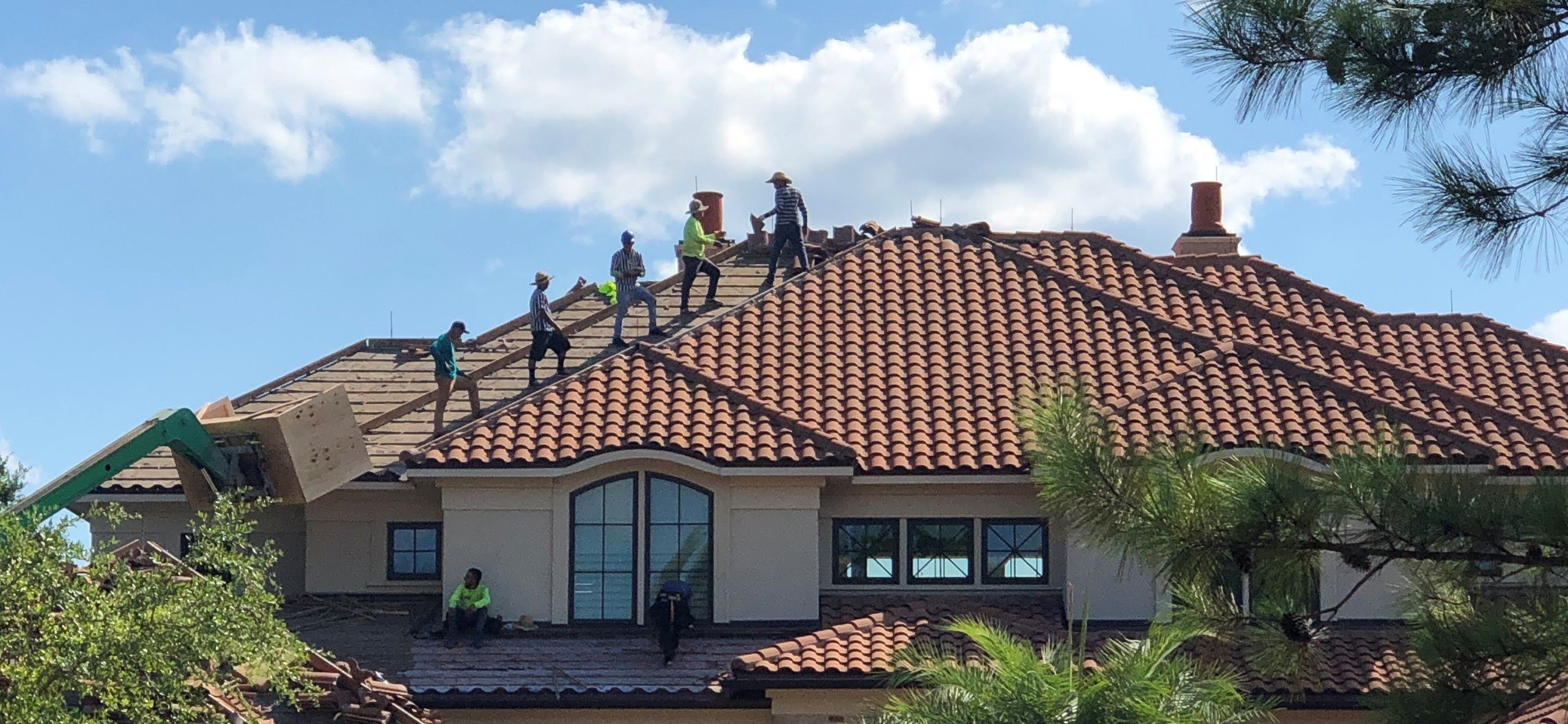A Comprehensive Look at Roofing Companies Gainesville Locals Recommend
A Comprehensive Look at Roofing Companies Gainesville Locals Recommend
Blog Article
Finest Practices for Ensuring Proper Roof Covering Air Flow
Making sure correct roof covering ventilation is critical for the longevity and performance of a roof system. A balanced consumption and exhaust vent ratio, generally 1:300, plays a crucial function, with intake vents preferably placed at the lower side of the roof for cool air entry and exhaust vents at the top for warm air leave. Normal examinations to determine obstructions and maintain clear airflow are extremely important. Furthermore, maintaining insulation far from vents is vital to avoid air flow restriction. Comprehending these fundamental components establishes the phase for more detailed understandings into installment and maintenance practices that can dramatically improve your roof system's performance.
Understand Air Flow Essentials
Appropriately understanding air flow basics is essential for ensuring the durability and performance of roof. Efficient ventilation mitigates wetness accumulation and temperature level extremes in the attic room, both of which can lead to significant structural damages over time. A well-ventilated roofing system aids in preventing usual issues such as mold and mildew development, wood rot, and ice dams, which can endanger the stability of the roofing products and the underlying structures.
The primary objective of air flow is to promote the activity of air, permitting a consistent exchange between the outdoor and indoor environments. This equilibrium is achieved via a combination of consumption and exhaust vents that interact to maintain optimal airflow. Intake vents, usually situated along the soffits or eaves, permit fresh air to enter the attic room room, while exhaust vents, often positioned at or near the roof ridge, make it possible for warm, moist air to get away.
Secret elements affecting the efficiency of roofing air flow consist of appropriate placement, adequate sizing, and making sure that both consumption and exhaust vents are unobstructed. Regular evaluation and maintenance are important to recognize potential obstructions, damages, or inefficiencies in the air flow system, therefore protecting the roof covering's performance and toughness.
Sorts Of Roof Vents
Roofing system vents play an important function in maintaining reliable attic air flow and, by expansion, the total health of the roof covering system. Different types of roofing system vents are available, each with special advantages customized to details roofing requirements.

Soffit vents are installed under the eaves and operate in tandem with roof covering vents to make sure a balanced consumption and exhaust system. By permitting cooler air to enter from below, soffit vents help with the expulsion of hot air through upper vents. Gable vents, situated on the exterior walls of the attic room, deal one more efficient option, especially in homes with saddleback roofs.
Analyze Your Current Air Flow

Following, consider the age and condition of your roof products and air flow parts. Older systems may not abide by current building ordinance or might have degraded in time, minimizing their performance. Conduct an extensive exam to determine any kind of signs of damage, such as rust, damage, or voids that could endanger the system's efficiency.
Furthermore, gauge the attic room temperature and moisture degrees. High temperature levels and humidity can suggest insufficient air flow.
Setup Best Practices
Reliable installment of roof ventilation systems is extremely important for making certain optimal performance and long life. Proper installation begins with understanding the details air flow requirements of the roof covering and the building it covers. This includes calculating the proper proportion of intake to exhaust vents, generally sticking to the 1:300 regulation, which stipulates one square foot of air flow for every 300 square feet of attic room floor area.

The placement of vents is similarly important. Intake vents need to be installed at the roof covering's lower edge, commonly in the soffits, to allow trendy air to get in. Exhaust vents, on the other hand, need to be set up near or at the roof's peak to help check these guys out with the exit of cozy, damp air. This creates a natural airflow that assists preserve temperature level and moisture equilibrium within the attic room.
Seal all air vent connections thoroughly to stop air leaks and potential water infiltration. Usage top quality products and comply with manufacturer guidelines to ensure toughness and efficiency. In addition, incorporating ridge vents with baffles can considerably enhance airflow performance by avoiding wind-driven rain and snow from going into the attic.
Eventually, precise installment of roof ventilation systems minimizes potential issues such as mold growth, ice dams, and structural damage, making certain the roof's stability and the structure's overall health and wellness.
Normal Upkeep Tips
Consistency in maintenance practices is roofing companies in gainesville florida fundamental to guaranteeing the long-lasting effectiveness of roof ventilation systems. Routine examinations are critical, preferably carried out biannually-- in the spring and autumn. Throughout these assessments, make certain that vents are complimentary of debris, nests, and other obstructions that could hamper air flow. Look for any indicators of wetness accumulation or mold, as these can show improper air flow or leakages (roofing companies gainesville florida).
Utilize a soft brush or a vacuum cleaner to eliminate dirt and particles from intake and exhaust vents. Be careful not to harm the vent screens or louvers throughout the procedure.
Correct insulation is similarly important. Make sure that attic room insulation does not block the vents, as this can badly limit air movement. Reposition or change it to preserve a reliable barrier. if any insulation has shifted or settled.
Last but not least, replace any type of harmed or missing out on components without delay. Broken vents, fractured roof shingles, or shabby blinking can all add to insufficient air flow and ought to be dealt with without delay. Routine maintenance guarantees that the roof air flow system operates efficiently, thereby extending the life expectancy of the roofing itself.
Conclusion
Making sure correct roofing air flow is extremely important for maintaining the effectiveness and resilience of websites a roofing system. Adherence to the 1:300 consumption and exhaust vent ratio, combined with the calculated placement of vents, is necessary. Normal semiannual evaluations, particles cleansing, and ensuring insulation does not obstruct air movement are critical practices. Implementing these finest methods will foster a well-ventilated roofing system, thus mitigating possible concerns connected to moisture build-up and excessive heat, ultimately prolonging the roof covering's life-span.
A balanced intake and exhaust vent ratio, commonly 1:300, plays a pivotal duty, with intake vents preferably put at the lower side of the roof covering for trendy air entrance and exhaust vents at the top for warm air leave. Consumption vents, normally situated along the eaves or soffits, allow fresh air to enter the attic space, while exhaust vents, often located at or near the roof covering ridge, enable warm, humid air to run away.
Soffit vents are installed under the eaves and work in tandem with roofing vents to guarantee a balanced consumption and exhaust system. By permitting cooler air to enter from below, soffit vents assist in the expulsion of warm air with upper vents. Adherence to the 1:300 intake and exhaust air vent ratio, paired with the calculated placement of vents, is essential.
Report this page